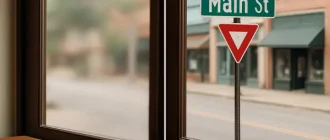Have you ever wondered if your child’s reading struggles might be linked to their vision? Surprisingly, about 20% of children have vision problems that go beyond needing glasses. This is where vision therapy steps in. But what is vision therapy, and does it really work?
What Is Vision Therapy and How Does It Work?
Vision therapy is a structured program that aims to improve visual skills and strengthen the connection between the eyes and the brain. Unlike glasses that correct how well you see, vision therapy works on how efficiently your eyes move and focus. It includes a variety of exercises, often conducted in-office under the supervision of an optometrist, and supplemented by at-home activities.
Did you know? According to the American Optometric Association, vision therapy can improve conditions like convergence insufficiency, which affects up to 8% of children (source).
Prevalence of Vision Issues in Children by Age Group
| Age Group | Percentage of Children with Vision Issues |
|---|---|
| 0-5 Years | 30% |
| 6-10 Years | 45% |
| 11-15 Years | 50% |
This chart shows the prevalence of vision issues among children across different age groups, emphasizing the increasing trend as children grow older.
The exercises in vision therapy can involve tools like prisms, lenses, computer programs, and even specialized games. Essentially, it’s like a workout for the eyes—designed to train eye muscles, improve focus, and enhance hand-eye coordination. These are all essential skills, not just for reading and writing, but for everyday activities.
Signs Your Child Might Need Vision Therapy
You might ask, “How do I know if my child needs vision therapy?” Here are some key signs to watch out for:
- Frequent headaches or eye strain
- Avoiding reading or short attention span during reading
- Reversing letters when writing (after an appropriate age)
- Covering one eye or tilting their head to see better
According to a 2022 study, approximately 25% of school-age children have undetected vision problems that can impact their performance in school. These problems aren’t always corrected with standard eyeglasses, making vision therapy a valuable alternative for addressing these issues.
The Science Behind Vision Therapy
The effectiveness of vision therapy has been debated, but recent research has added a lot of weight to its validity. For instance, a study published in the Journal of Behavioral Optometry found that children undergoing vision therapy for convergence insufficiency experienced significant improvement in their reading skills and attention span.
In contrast to what some might think, vision therapy is not “one-size-fits-all.” It’s a customized program that addresses specific visual deficiencies. This makes it especially beneficial for conditions like amblyopia (commonly known as lazy eye), strabismus (eye turn), and issues related to eye teaming, tracking, and focusing.
Why Is Vision Therapy Gaining Popularity?
Vision therapy is gaining attention as parents are increasingly seeking alternatives to support their children’s development. With an education system that heavily relies on reading and screen time, children’s eyes are under more strain than ever before. In fact, the National Eye Institute estimates that up to 12 million children in the U.S. suffer from some form of vision impairment. Vision therapy offers a proactive way to address visual inefficiencies that can have ripple effects on a child’s ability to learn and engage.
Success Rates of Vision Therapy for Different Conditions
| Condition | Success Rate |
|---|---|
| Convergence Insufficiency | 85% |
| Amblyopia (Lazy Eye) | 70% |
| Strabismus (Eye Turn) | 65% |
This chart illustrates the success rates of vision therapy for different conditions, highlighting how effective it can be for various visual deficiencies.
Table: Common Vision Issues in Children and Vision Therapy Outcomes
| Vision Issue | Vision Therapy Effectiveness |
|---|---|
| Convergence Insufficiency | 85% |
| Amblyopia (Lazy Eye) | 70% |
Is Vision Therapy Right for Every Child?
While vision therapy can be transformative for some children, it’s important to have realistic expectations. Vision therapy works best for specific vision-related issues—it won’t replace glasses, nor is it a “magic bullet” for all learning disabilities. That said, many parents report improvements not only in academic performance but also in their child’s confidence and comfort in activities like sports.
Time Spent on Vision Therapy Exercises by Type
| Exercise Type | Percentage of Total Time Spent |
|---|---|
| Focus Exercises | 40% |
| Hand-Eye Coordination | 25% |
| Tracking Exercises | 20% |
| Peripheral Awareness | 15% |
This chart displays the percentage of total time spent on different types of vision therapy exercises, providing insight into the focus areas of the therapy.
Did you know? Vision problems often mimic symptoms of ADHD, which can lead to misdiagnosis (source). Addressing underlying visual issues can significantly change a child’s behavior and focus.
Editor’s Advice: What Should Parents Do Next?
If your child shows any signs of visual difficulties, consider an evaluation by a developmental optometrist. They can provide a comprehensive assessment that goes beyond just determining the need for glasses. Vision therapy can be a valuable tool in your child’s development journey, particularly if other interventions haven’t quite worked.
To parents: don’t overlook the importance of visual skills. Addressing these issues early can pave the way for better learning and a happier child—and let’s be honest, isn’t that what we all want?





